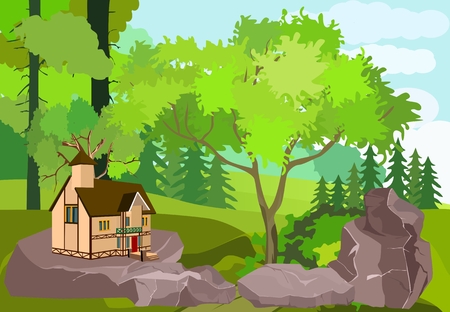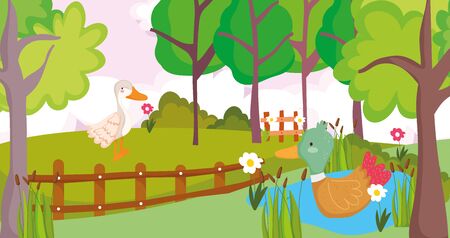Understanding Local Wildlife
Before you head out on a camping adventure with your kids, it’s crucial to get familiar with the types of wild animals that call the area home. In many American campgrounds, you might encounter deer, raccoons, squirrels, snakes, and even larger animals like black bears or coyotes, depending on the region. Each species has its own behavior patterns—raccoons are curious and often scavenge for food near campsites at night, while deer tend to keep their distance but may wander close if they feel safe. Bears can be drawn by food smells, and snakes often hide under rocks or logs during the day to stay cool. Teaching children about these behaviors helps them understand why wildlife should never be approached or fed. Discuss the habitats these animals prefer: wooded areas for deer, streamsides for raccoons, tall grass or brush piles for snakes. Remind kids that every animal has a role in the ecosystem and deserves respect from a safe distance. By learning to recognize signs of wildlife—like tracks or scat—children become more aware of their surroundings and can avoid potentially dangerous encounters while enjoying the wonders of nature.
Wildlife Safety Rules for Kids
Teaching children about wildlife safety is a must when heading out on a camping adventure. Kids are naturally curious, but the outdoors is full of unpredictable animals and situations. Here are some practical and easy-to-remember rules to help keep your little campers safe.
Key Guidelines for Wildlife Encounters
Kids should know how to behave if they spot wildlife in or around the campsite. Make sure these rules are clear before you hit the trail:
| Rule | Why It Matters |
|---|---|
| Keep a Safe Distance | Most animals will leave you alone if you don’t get too close. Getting near can make them feel threatened and trigger defensive behavior. |
| Never Feed Wildlife | Feeding animals makes them lose their fear of people, which can lead to dangerous encounters for future campers. |
| Store Food Properly | Food left out attracts animals to campsites. Always use bear-proof containers or hang food high in trees if you’re in bear country. |
| Avoid Approaching Injured or Baby Animals | Even if an animal looks hurt or friendly, its parents might be nearby—or it could bite in self-defense. |
Practical Outdoor Tips for Kids
- If you see an animal, stay calm and back away slowly—never run.
- Make noise as you walk, especially in dense brush. This helps avoid surprising wildlife.
- Always hike with a buddy or adult—never wander off alone.
Real-Life Example
If your child spots a deer while hiking, remind them: Watch from a distance, enjoy the view, but don’t try to get closer—even if the animal seems gentle. These simple rules set the foundation for safe, memorable outdoor adventures that build respect for wild places and creatures alike.

3. Recognizing Animal Tracks and Signs
One of the most practical skills you can teach your kids for wildlife safety during a camping trip is how to recognize animal tracks and signs. This knowledge not only boosts their outdoor awareness but also helps them stay alert to potential dangers in the wild. Start by showing them common animal footprints found in your area, such as deer, raccoon, or even bear tracks. Use a field guide or a smartphone app to help identify patterns and differences between tracks. Make it fun by turning track spotting into a scavenger hunt—kids love a challenge, and it keeps them engaged.
Beyond footprints, teach children to look for other clues animals leave behind. For example, scat (animal droppings) can tell you which creatures are nearby and how recently they passed through. Explain the importance of not touching scat, but recognizing its appearance—from rabbit pellets to larger bear droppings—so they know what to avoid. Additionally, show them how to spot chewed branches, claw marks on trees, or nests and burrows. All these signs give valuable information about wildlife activity around your campsite.
By empowering your kids with these observation skills, you help them develop a “nature radar.” They’ll learn to scan their surroundings for subtle hints of animal presence, making them more cautious and respectful when exploring new areas. Plus, these hands-on lessons encourage curiosity about local wildlife while reinforcing the importance of keeping a safe distance from all animals.
4. Emergency Response Skills
Teaching children how to react during unexpected wildlife encounters is crucial for their safety on camping trips. Kids need to understand that staying calm and thinking clearly can make all the difference in a tense situation. Here’s a breakdown of essential emergency response skills every child should know:
Staying Calm in the Face of Wildlife
Panic is your worst enemy during a wildlife encounter. Teach your kids to take deep breaths and avoid sudden movements if they see an animal nearby. Remind them not to run, as this can trigger a chase response in some animals.
Backing Away Safely
If an animal is spotted at a distance, show your children how to slowly back away while facing the animal without making direct eye contact, which some animals may perceive as a threat. Move quietly and steadily toward a safe area like your tent or vehicle.
Knowing When to Get Help
Children should be clear about when it’s time to alert an adult or call for help. Here’s a simple table to help them remember:
| Situation | What To Do |
|---|---|
| Animal is far and not noticing you | Stay quiet, back away slowly, tell an adult |
| Animal approaches or acts aggressive | Stay calm, don’t run, speak loudly, get to safety, call for help if needed |
| Bite or injury occurs | Find an adult immediately, call 911 or park rangers |
| You are alone and scared | Use a whistle or phone to alert someone nearby |
Using Safety Tools and Signals
Equip your kids with basic tools like whistles or two-way radios. Practice how to use these items before your trip so they know how to signal for help if separated from the group or if wildlife becomes a serious concern.
Practice Makes Perfect
Before heading into the wild, role-play different scenarios so your children feel confident applying these skills. The more familiar they are with emergency responses, the safer—and more empowered—they’ll feel during your outdoor adventures.
5. Interactive Learning Activities
Kids learn best when they’re having fun, especially in the great outdoors. To reinforce wildlife safety lessons on your camping adventure, get creative with hands-on activities that make these lessons stick. Try organizing a scavenger hunt focused on animal tracks, safe plants, or signs of wildlife presence—give each child a checklist and see who can spot the most items while staying alert to their surroundings. Another great activity is building a model of a “safe campsite” together. Have your kids help choose a spot away from animal trails and water sources, then set up camp while discussing why these choices matter for safety.
Role-playing is also a powerful tool. Set up scenarios where children pretend to encounter different animals like bears, snakes, or raccoons. Assign roles—one child could be the camper, another the animal—and practice the right responses: staying calm, backing away slowly, and never running. Make it fun by swapping roles and adding new challenges. These interactive activities not only teach crucial safety skills but also build confidence, teamwork, and respect for wildlife—all essential qualities for young adventurers.
Respecting Nature and Leave No Trace
One of the most important lessons you can teach kids on a camping adventure is to respect nature and practice Leave No Trace principles. Explain that every camper has a responsibility to protect the wild places they visit, which includes being careful not to disturb animals or their habitats. Remind children that leaving food or trash behind can attract wildlife to your campsite, which puts both the animals and people at risk. Make it a habit to always pack out what you pack in—even those tiny candy wrappers or orange peels count! Encourage kids to scan the area before leaving and pick up any litter, even if it’s not theirs.
Show them how to store food in secure containers or bear-proof lockers, especially in regions where animals like raccoons or bears might be nearby. Teach children why feeding wildlife is never okay: it changes animal behavior, can make them sick, and sometimes leads to dangerous encounters. By modeling these responsible habits, you help your kids understand that respecting wildlife means keeping a safe distance, staying on marked trails, and observing quietly without disturbing the natural balance.
Finally, use every camping trip as a chance to talk about why these actions matter—not just for your family’s safety but for the health of entire ecosystems. Practicing Leave No Trace is more than following rules; it’s about showing gratitude for the outdoors and ensuring future generations can enjoy wild spaces too. Instilling these values early helps raise lifelong stewards of the environment who know how to explore safely and responsibly.


